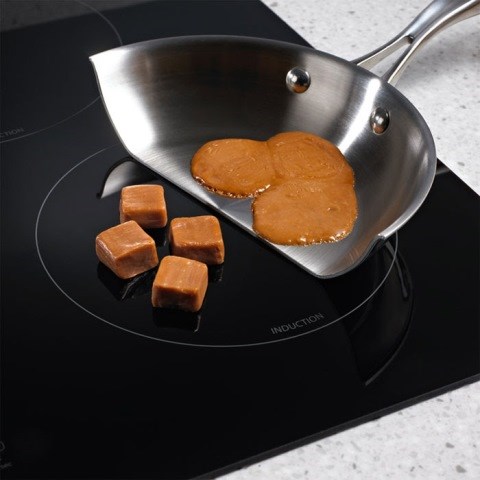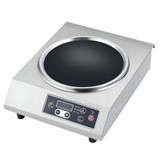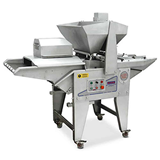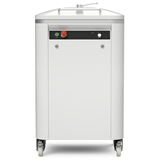Pastry chefs love them, popup kitchens rely on them, they have even made their way in to our home kitchens. But what do we really know about our induction plates and how they work?
Induction cook tops fall in to two categories: the first is the cheap under $500 units often purchased to just get a job done, no frills, just heat when and where it is needed. The second expensive class are sleek, easy to clean and powerful. Unfortunately, with all of them, they just lack interface, they still treat heat as High, Medium or Low, relying on the chef to respond and control the cooking.
Induction cook tops cheap or expensive have always shared similar flaws; overheating and shutting down, simplistic temperature control, a lack of power or a 15amp plug that doesn’t fit into a standard power point.
Breville realised the down fallings of induction technology several years ago, but how do you get over a hurdle that no one else has and why would anyone need to know the temperature of a pan to such accuracy? Breville were not just chasing accuracy but 1°C Accuracy. How and why? In the past sensors in induction cook wear were simply there to protect the device from overheating and self-destructing from its own cleverness. Sous vide cooking had achieved better than one degree accuracy, yet induction cooking with all its potential was still vastly inaccurate in controlling temperature. That was until Breville and Polyscience joined forces, intelligent design matched with years of precise temperature control. Design genius has ensued, if you can’t measure temperature through glass, drill a hole in it and set a multi-point temperature sensor against the cook ware being heated. If the greatest problem with induction is self-overheating, separate the control from the induction and independently cool both with variable intelligent fans.
Still the challenges ensued, if you know the temperature of the base of a pot of water, what temperature is the top of the pot? A separate probe to measure liquid at multiple points and software to intelligently interpreted and react to 1°C variation of temperature.
Suddenly, the possibilities with induction design and control are now limitless. Programmability, loops, auto sequencing, cook and hold, cook and turn off, cook and repeat, all of this based now on either temperature or time.




-160x160-state_article-rel-cat.png)

-160x160-state_article-rel-cat.png)













